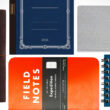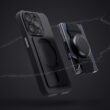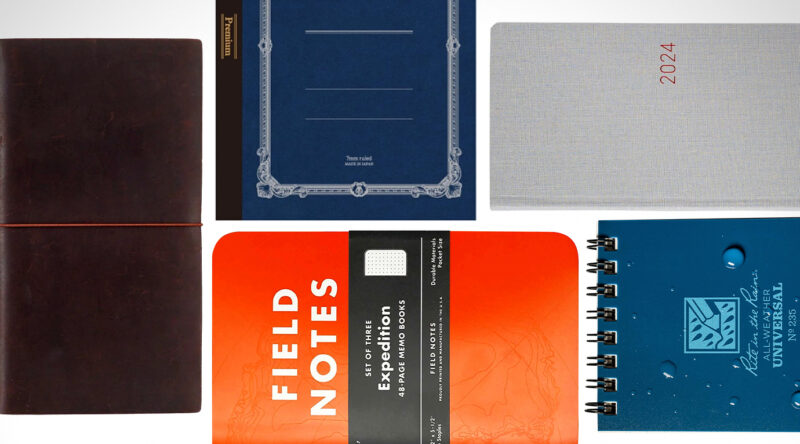It’s hard to beat carrying a notebook to jot down important information and agenda items quickly. In this digital age, it’s too easy to think that a phone can do it all, but a physical notebook doesn’t need a charged battery to work; it only needs a working pencil or pen. You don’t have to fiddle with face unlock or passwords, and unless your phone comes with a stylus, you’ll need to enter it all using a virtual keyboard on the screen.
An excellent everyday carry notebook can let you jot down notes quicker and faster than with a cell phone. Writing things down in a notebook can also help you retain the information you’re putting down, which is a big step from tossing important information down a digital black hole to be forgotten on some cloud service you will forget about in a few hours.
Whether you’re looking for a commonplace book with everything you want to remember and think about or just a small pocket notebook for the essentials, there are many options to look at and consider for your everyday carry. In this guide, we’ll explain all the benefits of carrying a pocket notebook for daily use, give you some strategies, and review some of our favorite picks for the best notebooks in this category in 2024.
The Benefits of a Pocket Notebook
A pocket notebook is your repository for what’s vital in your life. From remembering phone numbers to keeping on top of your appointments to documenting the ins and outs of your life, you can do it all with a good everyday carry pocket notebook. While you can use your cell phone to do many of the same tasks, writing things down in a notebook is faster and more convenient. A pocket notebook doesn’t need a distracting internet connection to work, and you can keep on using it when the power is out and your batteries run dry. There’s no password needed to unlock a notebook, and instead of finding the right app, you only have to use your favorite pen or pencil and get suitable to the task at hand. Plus, writing on paper can feel more satisfying in practice than swiping or typing on a virtual glass keyboard with zero feedback. Writing engages you more than a cell phone; it can help you retain and act on that information in the future instead of forgetting it in your digital data trove.
How to Maximize Your Pocket Notebook Use
Everyone has their own system for note-taking, but a few pointers can help you get started on the right path. One way is to dedicate the first page or so of a notebook to a table of contents or quick reference list that can help you locate things more profound in the pages. Writing as neat as possible will also help you recall the information in the notebook more quickly, and ensuring you add important dates, phone numbers, and appointments legibly and consistently can help you maximize the value you get from having an everyday carry pocket notebook.
You could also learn shorthand, which will let you write faster in high-stress situations. Plus, with the decline of that skill in the modern day, shorthand can act as a bit of security through obscurity in case someone casually rifles through your notebook while you’re away.
Top Pocket Notebooks for Everyday Carry in 2024
The Best Overall Pocket Notebook: Midori Traveler’s Notebook [Buy]
The Best Pocket Notebook on a Budget: Field Notes Expedition [Buy]
The Most Premium Pocket Notebook: Hobonichi Techo Weeks [Buy]
The Best Pocket Notebook for the Outdoors: Rite in the Rain Top Spiral [Buy]
The Best Pocket Notebook for Fountain Pens: Apica Premium C.D. [Buy]
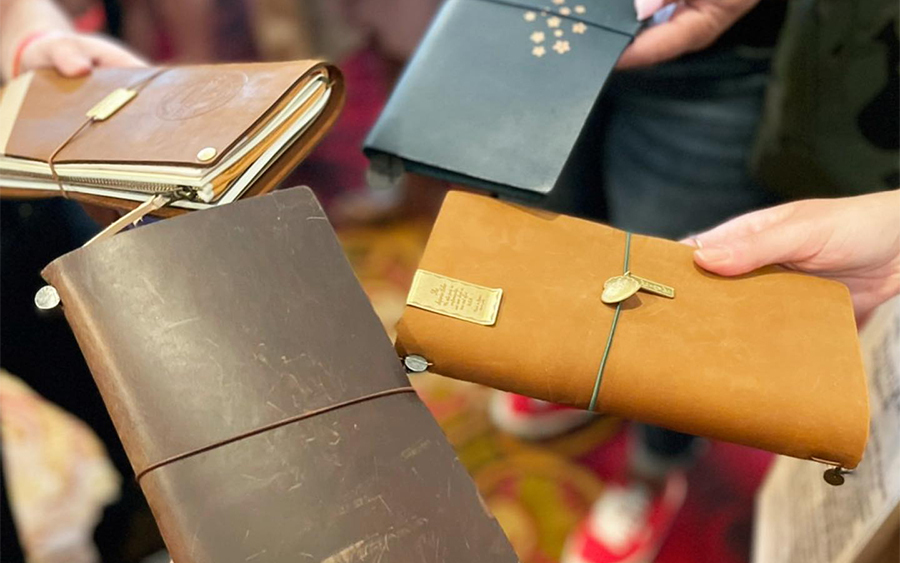
The Best Overall Pocket Notebook: Midori Traveler’s Notebook
The venerable Midori Traveler’s Notebook is our pick for the best overall pocket notebook. When picking out the right kind of notebook for everyday carry, it’s easy to focus solely on the paper inside. The Japanese Midori paper included with the Traveler’s Notebook is some of the best you can write with, primarily if you use water-based inks or fountain pens. But the Traveler’s Notebook is more than that because it also features a durable cowhide leather cover that accepts modular compact notebook paper refills of the same size. So, unlike spiral-bound school notebooks or smaller everyday carry notebooks that are stitched or glued shut, you can swap out the notebook refill once you run out of pages.
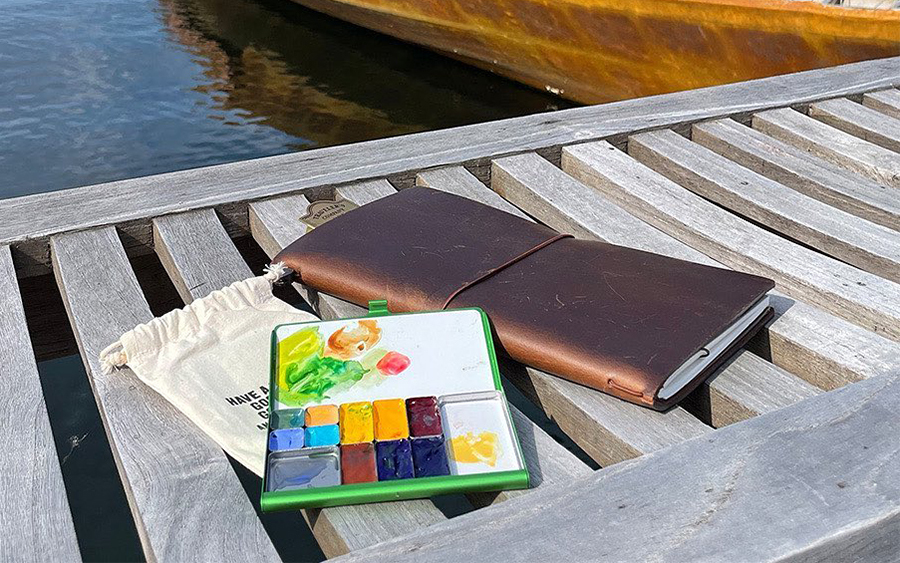
You can even use third-party notebook refills if the Midori paper isn’t to your liking or you have trouble sourcing it here in the United States. Along the way, the leather notebook cover will patina with age and the marks of daily use, making the Midori Traveler’s Notebook a buy-it-for-life pocket notebook so long as you don’t leave it behind on some travel adventure in the future.
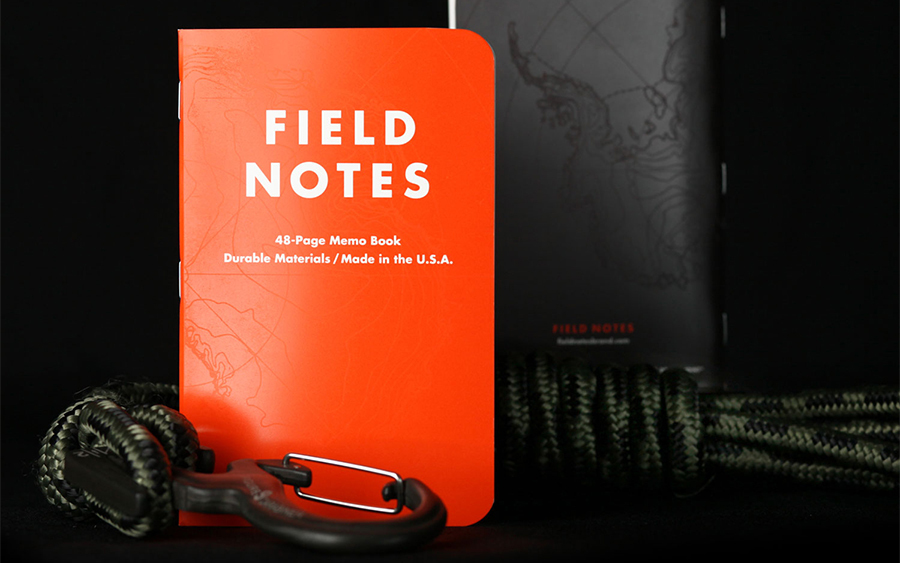
The Best Pocket Notebook on a Budget: Field Notes Expedition
The Field Notes Expedition is a happy medium in the pocket notebook space, as it provides three practical 48-page dot-graph notebooks at a reasonable price. The Field Notes Expedition is also a quality notebook, not a cut-rate dollar store deal. Field Notes prints and manufactures each notebook here in the United States, and they source from local Midwest artisans to get their waterproof 84 GSM Yupo synthetic body paper. The paper is also tearproof, making this a notebook you don’t have to worry about getting wet in the rain or out in the great outdoors. You can opt to carry one of the three notebooks at a time or dedicate a notebook for different kinds of notes or different parts of your everyday carry loadout.
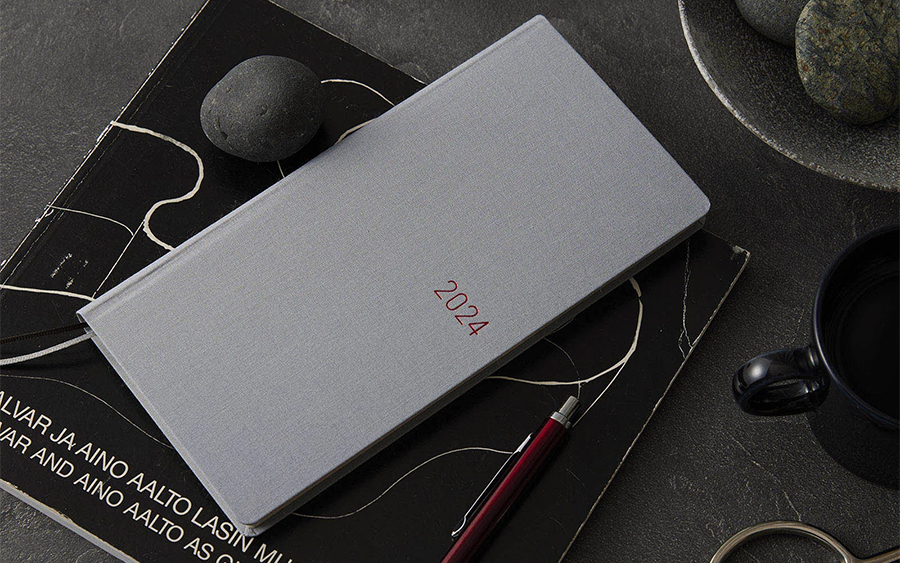
The Hobonichi Techno is one of the community’s favorite planner notebooks, but the Weeks version stands apart both for its different, slimmer profile and its focus on providing a weekly view of your upcoming appointments and engagements. The Weeks is noticeably slimmer and taller than the standard A5 and A6 Hobonichi Techno planner, and it’s the same size as a Japanese checkbook. While you’re probably not carrying one of those around, it does mean that it can fit in more pockets than not.
Most of the page spreads in the Weeks are dedicated to showing you each week with the days on one side and a dedicated note-taking space on the other. There’s a monthly view and additional reference material; the blank grid dot area allows for general notes. This is my pocket notebook calendar because it works better than the myriad of cloud app calendars on my phone that I ignore because of notification fatigue. If you want to write more notes than the Weeks provides, there’s also a Mega version of this notebook, which has more fountain-pen-friendly paper for your convenience.
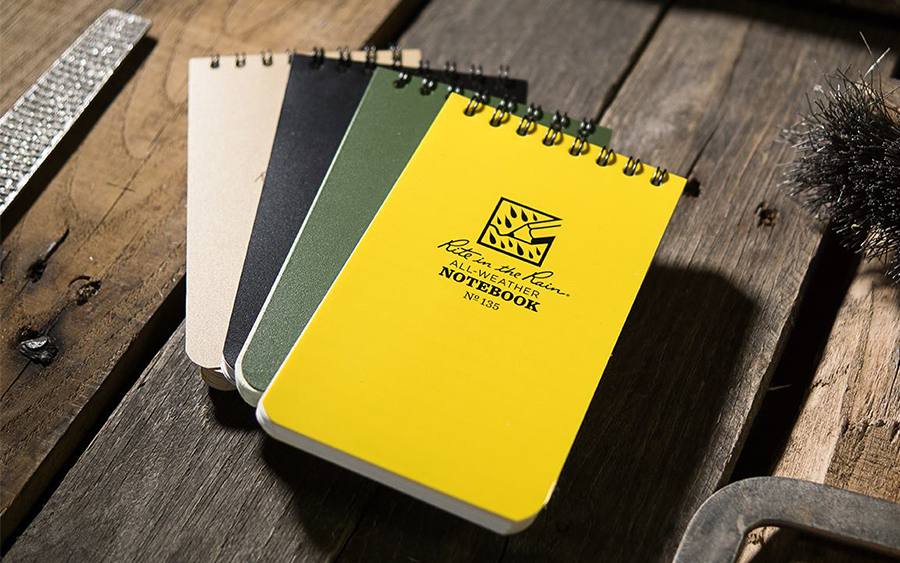
The Best Pocket Notebook for the Outdoors: Rite in the Rain Top Spiral
Rite in the Rain’s durable top spiral notebooks are trusted by first responders, outdoor enthusiasts, and military users to provide a weatherproof writing surface to plan operations and make critical observations without the risk of the paper disintegrating after getting wet. The top spiral is also made to a higher standard, so it won’t bend or twist out of position like the old-style reporter’s notebooks you might be used to. The Polydura notebook cover material is tough but flexible, so it won’t be uncomfortable in your pockets, especially if you carry a pocket notebook at the rear. The all-weather paper is entirely wood-based, so it’s completely recyclable and much friendlier to the environment when you’re done using it. While the waterproof paper makes it a challenge if you prefer water-based ink pens and fountain pens, it handles ballpoint and pencil lead just fine.
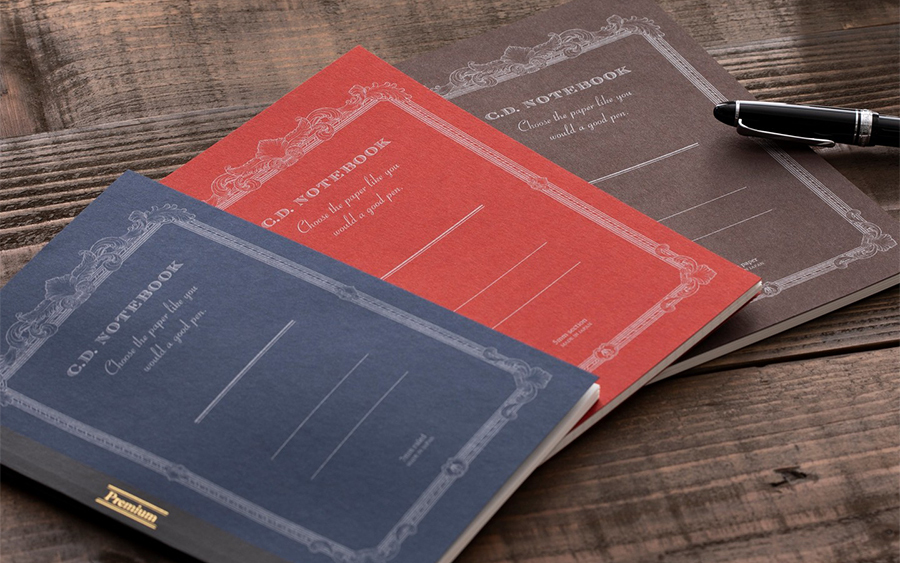
Apica notebooks are especially friendly for anyone who carries a fountain pen in their everyday carry. The company has been making these notebooks since the start of the last century when everyone used fountain pens. And while they’re more prevalent in Japan than elsewhere, plenty of everyday carry stationery aficionados love using fountain pens. And even if you don’t carry that kind of pen, the special silky smooth paper is a joy to handle and use even with ballpoints, gel pens, or pencils.
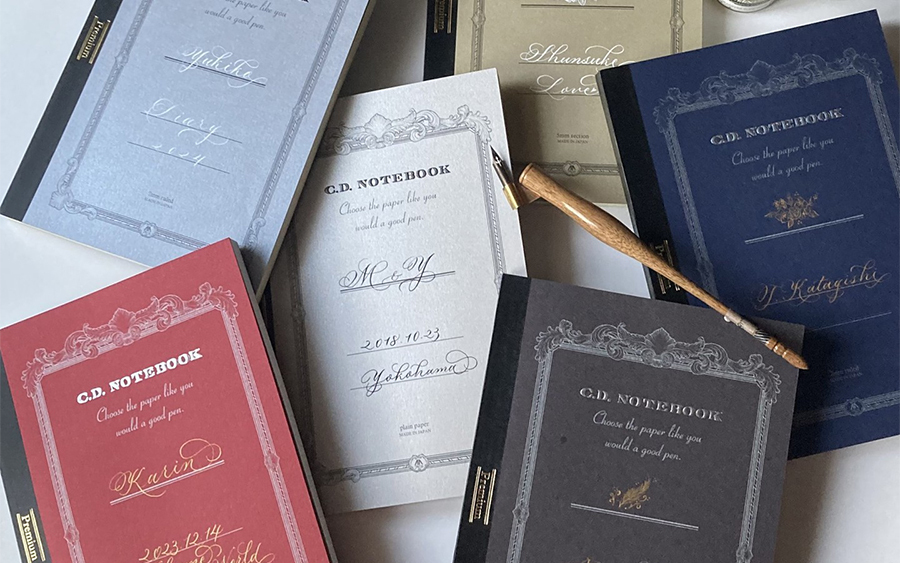
The acid-free Japanese paper each notebook comes with can handle the wettest fountain pen inks without smearing, feathering, or bleeding through the page, as you might experience on pocket notebooks that do not have fountain pen users in mind. One thing to note: the Apica notebooks are functionally the equivalent of the school composition notebook in the United States, except with much higher quality paper.
Our Other Recommendations
Stalogy Editor’s Series 365Days A6: If you want to carry a pocket notebook planner but are not a fan of highly structured calendar pages that become useless if you don’t use them throughout the year, the Stalogy Editor’s Series 365 A6 pocket notebook is a great choice. This pocket notebook can operate as your chosen calendar because you can configure the grid pages to show any time you want. You can also use the notations at the top to denote days and months of the year. You can also forego using those features entirely and just use the Staology 365 as a regular notebook; the choice is all yours. [Buy $13.45]
Maruman Mnemosyne N192 B7: The B7 size of this compact lined notebook gives you 50 sheets of white acid-free 68gsm paper in a compact spiral-bound package that doesn’t take up a lot of space in your pocket and is amazing to write on. Another stand-out feature of this Maruman notebook is that each page features micro-perforations, making it easy to neatly tear out pages for handing out to others or for quick reference later. [Buy $4.98]
MUJI Passport Memo: The MUJI Passport Memo provides a passport-sized notebook that can fit in passport wallets and your pocket. They make great companion notebooks as you travel and are great for quick notes on the go without taking up too much space. Each color of the notebook denotes the kind of ruling (or lack of it) inside, with my favorite being the red one, which is blank. While they’ve been more challenging in the United States as Muji has pulled back from the market, you can still find it from third-party retailers when they have them in stock. [Buy $11]
Moleskine Cahier Pocket: The Moleskine Cahier Pocket notebook is many an everyday carry stationery enthusiast’s first foray into quality paper. It’s a durable ruled notebook with sturdy cardboard paper covers and a heavy-duty stitched spine. Because you can write on the notebook itself, it’s easy to label the notebook based on its contents, and you can refer to those marks later if you keep them around after you fill them with notes. One thing to note, however, is that Moleskine paper tends to feather and bleed when you use fountain pens, but users of other writing tools will have a lot to love when they carry a Moleskine notebook in their pocket. [Buy $14.81]
LEUCHTTURM1917 Hardcover Pocket: If you’re tired of having the cover of your pocket notebook rip, bend, or wrinkle after daily use, the LEUCHTTURM1917 pocket notebook has a hard cover that will stand up to the test of time. This will, of course, make it far more rigid compared to the other notebooks on this list, but if you’re willing to pay the price of having a more inflexible notebook in your pocket, you might just be able to keep at it with this notebook for longer than something made to less exacting standards. [Buy $18.50]
What to Consider When Choosing a Pocket Notebook
With the wide range of pocket notebooks available for everyday carry, there are many things to consider when adding one to your ensemble. We’ll review some essential considerations, like size, paper quality, binding, rules, materials, and price. There’s likely not a perfect notebook that will hit everything you need, but being armed with the knowledge of what’s out will get you a head start on your search for the best pocket notebook for you.
Size and Portability
To be a good pocket notebook for everyday carry, it has to fit in your pockets. It would be easy to leave it there, but you should also consider the space the rest of your everyday carry takes if you’re dedicated to pocket-only carry. You can opt for more “pocketable” notebooks instead that are slightly larger (beyond A5 size) than what you can manage, but then you’ll need to consider how you’ll carry that notebook around. A notebook that has to be in a giant bag might be less portable in your eyes, and you’ll end up either not using it or leaving it at home when you forget it in the wrong bag.
Paper Quality
If you’re just entering the stationery enthusiast space, it might be challenging to appreciate what good quality paper can do for you entirely. However, each notebook we discuss in this guide has much better paper than the college rule and composition notebooks you might be used to from your time at school. This higher quality paper will also feel much more likable and be an intangible plus to carrying a quality everyday pocket notebook.
When you are more particular about high-quality pens, you will fully benefit from good paper, especially if you carry a fountain pen regularly. The water-based inks of fountain pens have a hard time on poor quality paper that’s either too porous so the ink bleeds through and smears or too scratchy, giving strange feedback as you write that makes it unpleasant to use. Another consideration is the “weight” of the paper and how it relates to quality. This weight is often expressed in grams per square meter (gsm); strictly speaking, a higher number means more heavy-duty paper. While this might mean a sturdier paper, quality is a bit more than just the thickness or durability. You have to consider the color, ink-bearing capability, and whether it has acid or not for long-term archival, among many other factors that will be highly personal at the end of the day.
Binding Type
A notebook is a paper collection bound to be more beneficial than carrying around a stack of index cards or loose-leaf sheets. How it’s bound can dictate how you use the notebook and its durability. The common ways a pocket notebook can be bound include the standard spiral bound style, which uses metal wire through holes to hold the paper into place. These benefit from being easy to lie flat and remove individual sheets compared to the other binding styles, even if the pages are not perforated, to ease the process.
More traditional book-style bindings follow, with glue binding and stitched binding being common. These have a similar opening and closing experience as a small pamphlet or paperback book and offer more rigidity. The downside of this style is that you compromise the integrity of the overall binding of the pocket notebook once you start ripping pages out. Stapled notebooks function like notepads, but the ones made for everyday carry tend to have higher quality paper and more durable stapling to stand up to daily pocket carry. Completely modular notebooks like the Traveler’s Notebook or ring binder styles are made accessible to swap new paper in and out as you need, but they can be more flimsy than perfect bound or switched book-style spiral notebooks in the process.
Ruling Type
How the pocket notebook pages are designed profoundly influences your use. If you write in dense paragraphs, traditional line-ruled paper will work best to keep everything organized and help you maximize the space on the page. Technical drawing and math users might prefer grid-style paper because it helps structure work better, especially if you make tables and graphs regularly. An in-between style is dot-graph paper, which gives you the ability to draw the structured squares when you need it but otherwise keep the page less cluttered. An utterly blank notebook gives you complete freedom, and it’s the best for free-form notes and drawings. This style might work best for you if you also like to write bigger than most college and even wide-ruled papers.
Another consideration is whether a notebook has calendars for days, weeks, and months. If a notebook is primarily made up of those pre-defined spaces, it might limit the freeform note-taking potential of it. You should choose the pocket notebook with the features and design that you
Cover Material
The cover material of a notebook affects its overall durability and your satisfaction with bringing it along for the ride. The most basic pocket notebooks have paper covers, which keep the weight down but are subject to ripping or bending during use. Paper covers will also not handle getting wet, and alternatives such as leather and polymer will not be able to handle it. Leather covers offer traditional quality and a nice feel in your hand. Whether you like that they might scratch and patina over time is up to you. Polymer covers offer some of the best resistance to getting wet but tend to be more rigid in your pocket, making the experience potentially uncomfortable. Polymer covers can also feel a bit cheap compared to other alternatives, but that’s often a matter of perception versus reality, as plenty of excellent everyday carry pocket notebooks feature that design element.
Price
Pocket notebooks tend to be relatively affordable, but nearly everything on this list will be far more expensive than more generic stationery store school notebooks. For the increased price of a quality everyday carry pocket notebook, you get higher quality paper that can handle things like writing with fountain pens. They tend to have archival quality paper that won’t fade or yellow with time, which is essential if you’re writing notes or thoughts down for the years to come.
FAQs
What is the best notebook size for a pocket?
A5- and A6-sized notebooks are about 4” tall and make the best pocket notebook size. You’re not going to want to exceed your pocket size to keep things the right size, but carrying a notebook that might fit in a jeans back pocket might not work for the days when you’re wearing something else.
Should I carry a pocket notebook?
You should carry a pocket notebook because of the convenience of quickly writing essential things down without fiddling with technology. Using a pocket notebook might be more helpful in remembering and retaining the information you write down.
What are the tiny notebooks called?
The tiny notebooks are called pocket notebooks. They can also be considered micro-sized notebooks and mini-notebooks. Some spiral notebooks of this size are sometimes called reporters or evidence books from law enforcement.
What do you write in your EDC notebook?
What you choose to write in your pocket notebook is entirely up to you. For something this small, important dates, appointments, phone numbers, addresses, and quick math are some of the best use cases for carrying a pocket notebook.
Are there environmentally friendly options for pocket notebooks?
Some environmentally friendly pocket notebooks use recycled paper and post-consumer materials to create a more sustainable everyday carry experience. Some notebooks also feature a modular and replaceable feature that means you can keep using the notebook and swap out the pages instead of buying an entirely new product when you’re done.
How long does an average pocket notebook last with daily use?
Assuming your pocket notebook has 50 pages, you can dedicate a page daily to your essential writing. That will give you more than a month of use, but your mileage may vary.
Are there waterproof or weatherproof pocket notebooks available?
Rite in the Rain makes some of the best waterproof and weatherproof pocket notebooks, and we suggest one in our guide. They feature highly water-repellent paper, and the binding and covers match the weather.
Can a digital note-taking app replace a physical pocket notebook?
If you can stay dedicated and use it, a digital note-taking app might replace the functions of a physical pocket notebook. We submit that having a physical notebook has benefits like no internet connection or power to work. Physical notebooks are cheaper than a thousand-dollar cell phone, but your mileage may vary.
How We Picked
Decades of experience and deep connections in the everyday carry industry give us a unique viewpoint on the market to inform our product recommendations. We have the depth of information for thousands of products that have come before and an extensive eye on the market to see what’s new and trending for each piece of gear. The result is a buying guide that we feel is informative and useful for EDCers of every trade, industry, and budget.
What is Everyday Carry?
Everyday Carry is both the concept of what people carry in their pockets and the process of picking out gear that thoughtfully considers what one wants or needs in their daily life. It encompasses everything from style to preparedness to utility, meaning an entire industry full of valuable tools and essentials to choose from.
Our team has decades of combined experience in all aspects of everyday men’s essentials, from wallets to pens to bags and everything in between, and we know where to find great gear ideas that you may not come across at your local stores or when shopping online. Our expertise in the industry and familiarity with design, materials, and usability help you make more informed choices when it comes to picking up your next piece of gear.

